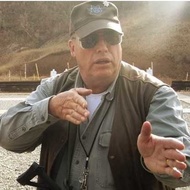14 Jan 20
“How did it get so late so soon?
It’s night before it’s afternoon.
December is here before it’s June.
My goodness, how time has flewn!”
Dr Seuss
Eugene Stoner was not a fan of the forward-assist on his AR Rifle. He thought it unnecessary.
Early production, delivered to the Air Force, did not feature it, but the Army insisted on it.
Lack of a forward-assist was also a concern with the FAL, and a significant reason it lost-out in favor of the M14 in US Military trials in the 1950s. The FAL did go on to be adopted by most other NATO Nations.
Stoner’s AR was designed and intended to replace only the M1 Carbine, and its use was thus anticipated to be confined to rear areas, MPs, and guard-duty.
However, the M14 went out of production in 1963, in naive anticipation of the “SPIW” (Special Purpose Infantry Weapon) Program producing a “wonder-rifle” two years later.
The M14 had proven difficult and slow to produce. Numbers actually delivered to the Army were nowhere near production goals.
Unhappily, the SPIW Program produced nothing even remotely usable. It thus became completely discredited, and was eventually decommissioned. No “SPIW Rifles” ever saw the light of day!
In the interim, restarting the M14 Program enjoyed virtually no support within the US Military, so, with Vietnam heating-up in the late 1960s, by default the AR became our new flagship infantry rifle, a role for which it was never intended.
It has been ever since!
The enormously successful FN 7.62×51 MAG GPMG (General Purpose Machinegun), introduced in 1958, is basically a belt-fed BAR. Belt-fed versions of the BAR, and British BREN, had been in development, all unsuccessfully, for at least a decade prior to WWII.
FN was the first to make the concept work, and work it did!
MAG is an abbreviation for “Mitrailleuse d’Appui Général,” loosely translated: “General-Support Machinegun”
GPMGs can be fired in the LMG (Light Machinegun) role, from a bi-pod with an attached ammunition box (so that the gunner does not have to carry his weapon unloaded), or from a tripod with a built-in traversing-and-elevating mechanism, and fed from a separate, detached magazine box, the HMG (Heavy Machinegun) role
Attempts to convert the venerable WWII German MG42 GPMG (in 8mm Mauser) to 30-06, 7.62×51, and other calibers, were all unsuccessful. The MG42 (in 8mm), the minority that were not destroyed at the end of WWII, stuck-around into the late 1950s, but then faded away. A few remain in service today, but in far-flung corners of the world.
The MG42’s high rate of fire (1200-1500 R/M) never received a warm welcome in the West, particularly for use by infantry! Such high rates of fire were usually reserved for aircraft, and anti-aircraft, use. Western war planners considered (and still do) 600-800 R/M to be more appropriate for an infantry GPMG.
The MAG (along with the FAL) was adopted by many NATO nations in the 1950/60s, with the exception of the USA, which went with the endlessly problem-prone M60.
In 1977, the MAG (now designated the M240) finally replaced the M60 in the USA.
An interim GPMG, the M73, developed and briefly fielded in the 1970s, was stillborn. Endless problems with the M73 System led to it’s embarrassingly quick abandonment!
An identical fate awaited the highly-touted M85 HMG (50 BMG), which was selected (1970s) to replace aging Browning M2s. The M85, like the M73, proved itself close to useless in the field and was quickly discarded.
The M2 is still with us!
My Garand
Do you wonder why that rifle
Is hanging in my den?
You know I rarely take it down,
But I touch it now and then.
It’s rather slow and heavy
By standards of today
But not too many years ago
It swept the rest away!
It’s held its own in battles
Through snow, rain, and sun
And I had one just like it,
This treasured old M1.
It went ashore at Bougainville
In Nineteen Forty-Three.
It stormed the beach at Tarawa
Through a bullet-riddled sea.
Saipan knew its strident bark,
Kwajelein, its sting.
The rocky caves of Peleliu
Resounded with its ring.
It climbed the Hill on Iwo
With men who wouldn’t stop
And left our nation’s banner
Flying on its top.
It poked its nose in Pusan,
Screamed an angry roar
And took the First Marine Division
From Chosin Reservoir.
Well, time moves on
And things improve
With rifles and with men,
And that is why the two of us
Are sitting in my den.
But sometimes on a winter night,
While thinking of my Corps,
I know that when the Bugle blows
We’ll be a Team once more!
Anon
Amen, Amen!
/John



